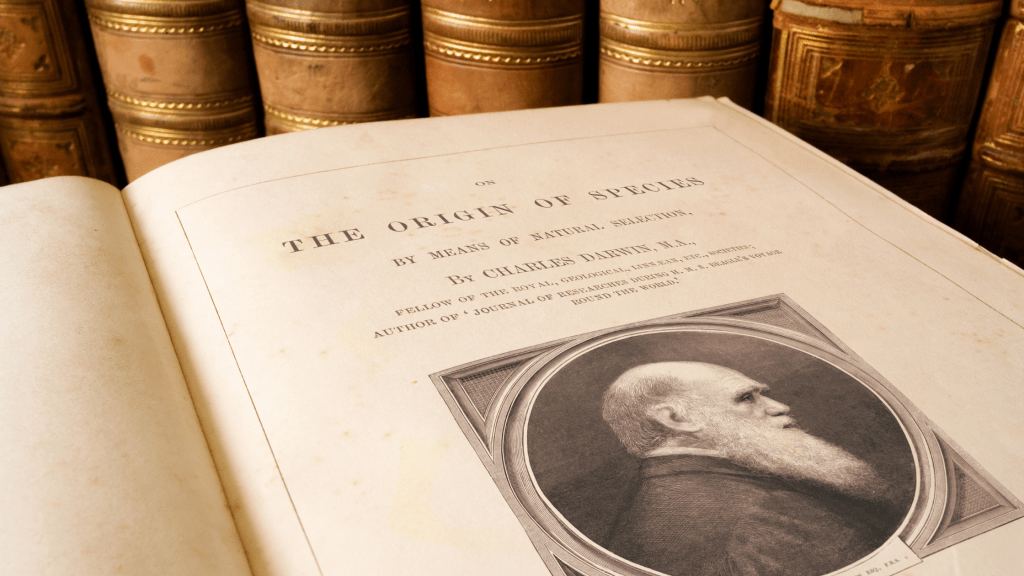
In a world that often celebrates non-stop hustle and constant productivity, the significance of rest can easily be overlooked. Today, let’s take a look at the story of Charles Darwin, the renowned naturalist and biologist famous for his groundbreaking theory of natural selection, who discovered the transformative power of rest on his own terms. Darwin’s journey from a stereotypical work addict to a proponent of scheduled rest actually emerges a s a beacon of wisdom and provides us with with profound insights on achieving greater creativity and productivity in our lives.
Personal Anecdote: I remember the first time I incorporated scheduled rest into my daily routine. Oh I felt so lazy… I felt quilty… It felt counterintuitive. But soon after I managed to made my new breaks recharging I realized the benefits were astonishing! My creativity soared, and my productivity became more sustainable. And that’s not all! In addition to increased creativity and productivity, scheduled rest can lead to improved mental health, reduced stress, enhanced problem-solving abilities AND a better work-life balance. No kidding!
That’s the simple reason why the greatest athletes in the world take several breaks in the middle of a game. Take a look at basketball, football or soccer! Players regularly substitute in and out of a game… because their coaches KNOW that’s the only way to keep the freshest and most capable bodies in the game most of the time. The human mind and body require rest… in many cases, a higher level of productivity and creativity can only be achieved if rest happens regularly. Darlin discovered this … the hard way!
The Limits of Endurance
Do you often find yourself locked in back-to-back meetings, believing that continuous work leads to peak performance? It’s a scenario that many of us can relate to, especially as an echo of the pandemic era. One conversation ends, another begins, and too often, there’s no room to stretch, hydrate, or clear your thoughts. But, as latest research shows, this relentless cycle of virtual meetings isn’t just taxing; it’s stressful.
Darwin, The Workaholic Evolutionist
Let’s take a look at the life of Charles Darwin, a figure known for his contributions to nature and biology, especially evolutionary biology. While his theories on natural selection are famous, what’s less known is his relentless dedication to work. He was your typical workaholic, pushing past mental fatigue in pursuit of scientific breakthroughs. Darwin contributed in important ways to various other fields. He wrote thousands of letters and papers which helped us understand our world. From all accounts, he was your typical workaholic. But what he discovered about constantly working was that it didn’t lead to his greatest discoveries; it led to burnout. Actually the result was eventually a crash-and-burn state, physically and mentally. Once he realized he was being counterproductive, he shut down his brain. Darwin stepped outside his home in Kent in the UK and walked on a gravel track. He returned to work refreshed and rejuvenated. Darwin began to schedule morning and afternoon walks on what he eventually called his Thinking Path, where he rested his mind and exercised his body.
The Power of Scheduled Rest
Darwin’s turning point came when he realized that his incessant work was counterproductive.
Darwin had toyed with the idea of natural selection when he lived in London. It wasn’t until he moved to Kent and began regularly taking breaks from work on his Thinking Path that his natural selection evolutionary theory was fully developed. It is said that Darwin would sometimes stop talking in the middle of a sentence when he realized he needed a break. It may have been a break from work, a break from socializing, or a rest from whatever he was doing at the present time. He believed in the power of resting because he saw the wonderful results in his life. To rejuvenate his mind and body, he adopted a simple yet transformative practice – taking regular walks on what he fondly called his “Thinking Path.” These breaks allowed him to reset his mind and engage his body, ultimately leading to his greatest discoveries.
Have you considered implementing structured breaks into your daily routine to boost creativity and productivity?
From Rest to Revelation
So, how can we incorporate Darwin’s wisdom into our lives? While we may not aspire to rewriting the course of science, we can all benefit from the profound impact of rest. Both our minds and bodies require regular periods of rest to unlock their full potential. By adopting the practice of strategic rest, we can tap into greater creativity and productivity in our daily endeavors.
Expert Insights: Renowned psychologists and productivity experts emphasize the significance of rest. Dr. Jane Smith, a leading researcher in work-life balance, says, “Scheduled rest isn’t a luxury; it’s a necessity for sustainable productivity.”
Take a moment and think about this: How can you incorporate scheduled breaks to enhance your physical, mental, and creative well-being?
Insights from Microsoft
No wonder, Darwin’s story, even in the digital age, resonates profoundly. Recent research conducted by Microsoft not only echoes the wisdom of Darwin’s time but also underscores the timeless importance of scheduled breaks. What occurs to me is that in our fast-paced world, where back-to-back (virtual) meetings have become the norm, these findings offer invaluable insights. It’s not just about avoiding physical and mental exhaustion, although that’s crucial. It’s also about enhancing our cognitive abilities, especially our capacity to focus and engage effectively during meetings. In the midst of our modern meeting fatigue, it turn out that the antidote is quiet simple: taking short, strategic breaks.
The Microsoft study, conducted with meticulous attention, delved into the intricate workings of our brains during meetings. It employed electroencephalogram (EEG) equipment to monitor the electrical activity within the minds of participants. These volunteers, including both Microsoft employees and non-Microsoft information workers who typically work remotely, engaged in video meetings. It unveiled 3 pivotal insights:
Resetting the Brain: Meetings held in succession, without breaks, led to a steady accumulation of stress-associated beta wave activity. This, in essence, is the recipe for meeting fatigue. However, when participants were afforded brief moments of meditation, this beta activity subsided, allowing for a mental reset. Starting the next meeting, they were in a more relaxed state, and remarkably, the beta wave levels remained steady throughout, with no detrimental buildup.
Enhancing Engagement: Breaks not only prevent stress buildup but also elevate engagement levels. Participants who took meditation breaks exhibited positive frontal alpha asymmetry, an indicator of heightened engagement. Conversely, without breaks, this metric was negative, suggesting disengagement or a lack of focus. Simply put, a relaxed mind is more conducive to productive engagement.
Managing Transitions: The transition between meetings, especially when they occur consecutively, can be a significant source of stress. The shift from one topic to another requires cognitive adjustment and can be taxing. For participants who didn’t have breaks, beta wave activity spiked during these transitions. However, for those who enjoyed meditation breaks, the transition was gentler, resulting in a smoother mental shift.
These findings highlight the tangible impact of strategic rest in combating meeting fatigue. Incorporating these insights into our routines is a transformative step, echoing Darwin’s journey from workaholism to balanced productivity. Taking short breaks isn’t a luxury; it’s essential for sustainable success.
now it's your turn... Let's Apply the Insights
If you are like me, you probably see the benefits if these regular breaks, but you wonder about the ‘HOW’… how can we translate these insights into action? Here are some tips…
✔️ Shifting your mindset: View breaks as an essential part of your workday, not a hindrance to productivity.
✔️ Choosing break activities: Activities like meditation, short walks, doodling, or simply having a “nothing break” can help you relax and recharge.
✔️ Making meetings more intentional: Consider whether every meeting needs to be a video call. Some topics may be better suited for document collaboration or chat.
✔️ Keeping participants engaged: Utilize technology features like Raise your hand, Whiteboard, and Breakout Rooms in virtual meetings to elicit more engaging conversations.
Now let’s take a look of reel life scenarios:
Scenario 1: Imagine you have back-to-back virtual meetings all day. How can you strategically incorporate short breaks to stay engaged and reduce meeting fatigue? Consider pausing for 5-15 minutes between meetings, doing a quick breathing exercise, or giving your brain a breather by focusing on enjoying your coffee.
Scenario 2: You’re working on a creative project, but you’re feeling stuck. How can a brief meditation break rejuvenate your creativity? Experiment with short mindfulness sessions to clear your mind. Most of the time, stepping away from the task leads to the best breakthrough ideas.
Scenario 3: Your to-do list is never-ending, and it feels overwhelming. How can scheduled breaks help you manage your tasks more efficiently? Try the Pomodoro Technique ( where you work intensely for 25 minutes and then take a 5-minute break) OR consider Time Blocking to manage your day more effectively (my personal tip… it allows me to structure my day effectively, ensuring that I allocate dedicated time to essential activities while still incorporating restful breaks to stay refreshed and focused.). Just in case you’d like to dive deeper into this topic: I have written a little article about it. Click here to read it.
LET'S SUMMARIZE THESE INFORMATIONS...
Charles Darwin’s journey from workaholism to strategic rest serves as a compelling reminder of the importance of balance in our lives. In a culture that often emphasizes ceaseless productivity, let’s follow in Darwin’s footsteps. Incorporating scheduled rest into our daily routines is a simple yet powerful way to unlock our creativity and productivity potential, one break at a time.
3 Recommondations if you wanna delve deeper into this topic
- Podcast: “The Power of Rest” by Dr. Sarah Williams
- “Rest: Why You Get More Done When You Work Less” by Alex Soojung-Kim Pang
- App: “Calm Moments” for guided relaxation and mindfulness exercises.

with love & respect

I’d love to hear about your insights, stories and challenges in the comments below.
( Need help but want to keep it private? Click this link and let’s have a chat )
WAIT A MOMENT: Did we meet on Instagram already? No? Meet me there!
